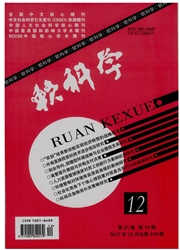

 中文摘要:
中文摘要:
采用会计的思维方法,基于财政约束下以中国29个省2009~2013年连续5年的年度面板数据,运用SuperSBM模型以财政环境保护支出指标作为非期望产出,判断经济性和资源性资产向环境负债的转换效率。以中国各省5年环境保护投资占GDP比重均值1.5%、转换效率均值1为标准,将各省级地方政府分为4类:经济性资产投入高转换效率高、资源性资产投入高转换效率高、经济性资产投入低转换效率低、资源性资产投入低转换效率低。并结合中国主体功能区战略规划,深入分析挖掘各省环境治理特征与学习标杆。运用Malmquist指数比较各省同一年转换效率的相对动态改善程度,结果发现中国各省转换效率总体有所改善,转换效率动态变化的省际差异先逐年增大再趋于平稳。
 英文摘要:
英文摘要:
Based on the habit of accounting thinking way, this paper selectes annual panel data from 29 provinces in China for five consecutive years within (between) 2009 -2013 under the fiscal constraints, utilized Super-SBM model and regar- ded fiscal spending of environmental protection index as undesirable outputs to measure the efficiency of converting economic assets and resource assets to environmental liabilities. Using the 5-year-averaged environment protection investment to GDP ratio ~ 1.5% ) and mean conversion efficiency as the standard, Chinese provinces has been classified into 4 categories : ( 1 ) high economic assets inputs / high conversion efficiency ; ( 2 ) high resources assets inputs / high conversion efficiency ; ( 3 ) low economic assets inputs / low conversion efficiency ; (4) low resources assets inputs / low conversion efficiency. Combi- ning principal function region strategic plan in China, it deeply analyzes provincial governmental environmental characteris- tics and benchmarks. Comparing the degree of related dynamic improvements of conversion efficiency among different prov- inces of the same year by utilizing the Malmquist index, it refleetes an overall improvement of conversion efficiency recently and reveales that the dynamic differences of conversion efficiency among provinces increased with years and then leveled off.
 同期刊论文项目
同期刊论文项目
 同项目期刊论文
同项目期刊论文
 期刊信息
期刊信息
